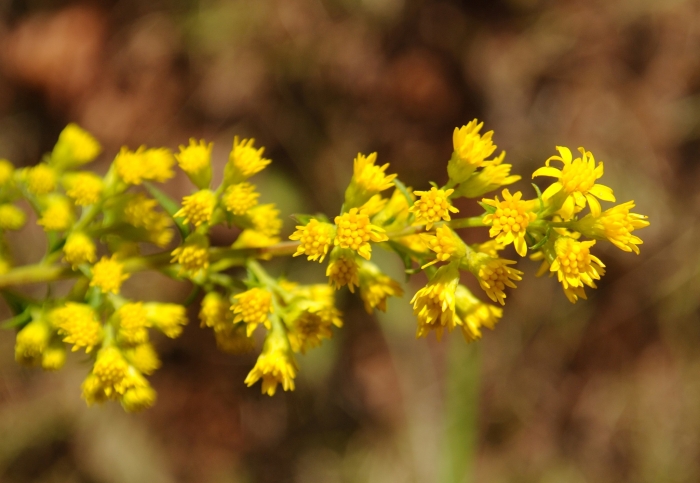Downy Goldenrod
(Solidago puberula)
Downy Goldenrod (Solidago puberula)
/
/

Zihao Wang
CC BY 4.0
Image By:
Zihao Wang
Recorded By:
Copyright:
CC BY 4.0
Copyright Notice:
Photo by: Zihao Wang | License Type: CC BY 4.0 | License URL: http://creativecommons.org/licenses/by/4.0/ | Rights Holder: Zihao Wang | Publisher: iNaturalist | Date Created: 2019-09-15T17:13:29-07:00 |


















































Estimated Native Range
Summary
Solidago puberula, commonly known as Downy Goldenrod, is a deciduous perennial herb native to open woodlands, forest edges, and meadows in the Eastern United States. It typically grows up to 100 cm (39.5 in) tall, with a branched woody rootstock and 1-5 puberulent (hairy) stems. The leaves are toothed, tapering at the tip, and puberulent on both sides. The plant is known for its elongate, paniculiform array of 15–250 flowering heads, each with 9–16 yellow ray flowers. It blooms in late summer to fall, adding a splash of color to the landscape when many other plants are starting to decline.
Downy Goldenrod is valued for its ease of maintenance and its ability to attract pollinators such as bees and butterflies. It is often used in naturalistic plantings, wildflower gardens, and as a component of pollinator-friendly landscapes. This goldenrod prefers full sun but can tolerate part shade and is drought-tolerant once established, making it suitable for xeriscaping. It thrives in soils with medium to fast drainage. While generally pest-free, it can occasionally suffer from rust or mildew in humid conditions. Downy Goldenrod is not typically aggressive but can spread through its rhizomes, so it may require management in smaller garden settings.CC BY-SA 4.0
Downy Goldenrod is valued for its ease of maintenance and its ability to attract pollinators such as bees and butterflies. It is often used in naturalistic plantings, wildflower gardens, and as a component of pollinator-friendly landscapes. This goldenrod prefers full sun but can tolerate part shade and is drought-tolerant once established, making it suitable for xeriscaping. It thrives in soils with medium to fast drainage. While generally pest-free, it can occasionally suffer from rust or mildew in humid conditions. Downy Goldenrod is not typically aggressive but can spread through its rhizomes, so it may require management in smaller garden settings.CC BY-SA 4.0
Plant Description
- Plant Type: Herb
- Height: 1-3 feet
- Width: 1-4 feet
- Growth Rate: Moderate
- Flower Color: Yellow
- Flowering Season: Spring, Summer
- Leaf Retention: Deciduous
Growth Requirements
- Sun: Full Sun
- Water: Medium, High
- Drainage: Medium, Fast
Common Uses
Bee Garden, Bird Garden, Butterfly Garden, Deer Resistant, Drought Tolerant, Hummingbird Garden, Low Maintenance, Rabbit Resistant, Showy Flowers
Natural Habitat
Native to open woodlands, forest edges, and meadows
Other Names
Common Names: Short Pubescent Goldenrod, Solidage Pubérulente, Verge D’Or Pubérulente
Scientific Names: , Solidago puberula, Solidago puberula var. puberula, Solidago puberula var. borealis, Solidago obovata, Solidago puberula f. puberula, Solidago puberula var. expansa, Solidago pubescens,
GBIF Accepted Name: Solidago puberula Nutt.